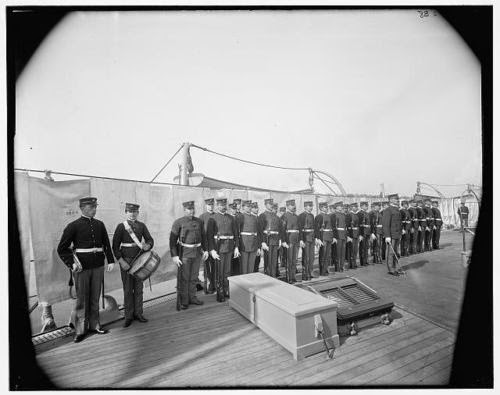On our way to visit the Spoetzl Brewery in Shiner, Texas, my husband agreed that since that outing was “his thing,” we should make a stop on the way that was something I would especially enjoy. And, yes…he knew that would entail sitting in the car as I roamed an old cemetery somewhere along the route, taking photos. He’s a good sport!
So, with a bit of quick Googling, I found Lavaca County’s Old Moulton Cemetery. It seemed to have a good number of older headstones and offer some exploring opportunities.
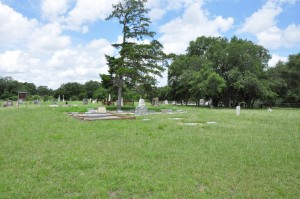
It was in this cemetery that I came across the marker of R.H. and E. J. McGinty – both born toward the first part of the 19th century.
The stone is in remarkably good shape, given that it has been exposed to Texas weather for over 100 years.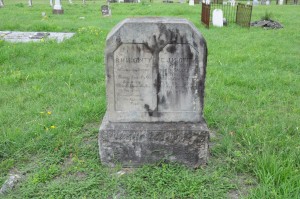
The engraving itself was obviously not done by a seasoned professional. But whoever did carve the marker took great care and engraved the names, information and epitaph to the best of their ability. The extra effort makes it all the more poignant.
So, who was this couple?
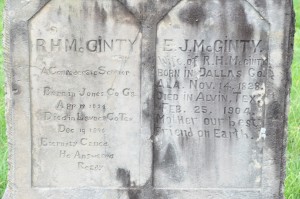 Robert Henry McGinty was born to Shadrach McGinty and Mary “Polly” Lamar McGinty on April 17, 1824 in Jones County, Georgia. Mary’s father James Lamar, according to family stories, was a first cousin to Mirabeau B. Lamar, the second president of the Republic of Texas.
Robert Henry McGinty was born to Shadrach McGinty and Mary “Polly” Lamar McGinty on April 17, 1824 in Jones County, Georgia. Mary’s father James Lamar, according to family stories, was a first cousin to Mirabeau B. Lamar, the second president of the Republic of Texas.
Shortly after 1840, Robert’s family moved to Dallas County, Alabama where he would meet his future wife. Her name was Elizabeth “Eliza” Jane Lucas, who was born in Dallas County on November 14, 1828. They married on Feb. 6, 1844.
By the 1850 census, Robert, his new wife Jane (age 21) and their sons John Henry (age 3, born Dec. 1, 1846) and James Milton (age 1, born Jan. 10, 1849) lived on a farm next to Shadrack’s in Catahoula Parish, Louisiana.
Another family story explains that both were farmers on the Dubois Plantation at the time. Although there is still a Dubois Plantation Road off of Highway 190 in Tammany, Louisiana near the famous River Road District, this is in St. Tammany Parish.
Catahoula Parish is far north of this location, closer to Natchez. But, of course, there is nothing to say that they did not live on plantation grounds, and that the family just misinterpreted the name through the years. Plantation names were not listed on the censuses, but Catahoula Parish had the highest number of slaves in the era, so it makes sense that the area was plantation/farm country.
But I digress…history does that to me.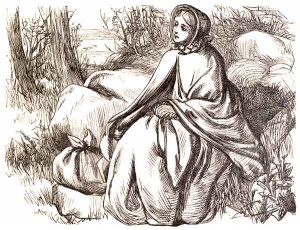
The next handful of years were filled with joy and sorrow: the birth of daughter Mary Jane in 1851; the death of son John Henry in 1853; the birth of daughter Susan E. in 1854; the birth of son Obediah L. in 1857; the birth of son Robert in 1859, and the death of Susan the same year.
Evidently, during that time Robert’s parents Shadrack and Polly moved to El Dorado, Union County, Arkansas to farm. Shadrack disappears from the records soon after that, and is assumed to have passed away.
So to help his mother and leave the heartache of lost children behind, Robert and Jane moved their family to Arkansas, inheriting and farming his father’s land. His mother Polly lived with them and appears in their household on the 1860 census.
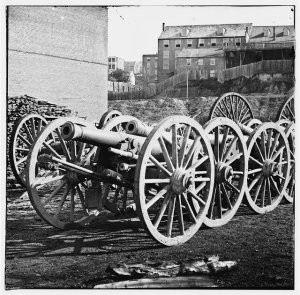 Robert left to serve in the Confederate Army, Company C, Second Battallion of the Arkansas Infantry on September 22, 1861. He was wounded by enemy artillery and sent home in December, probably in time to see the birth of daughter Nancie (Nannie) Aresenith on Dec. 20, 1861.
Robert left to serve in the Confederate Army, Company C, Second Battallion of the Arkansas Infantry on September 22, 1861. He was wounded by enemy artillery and sent home in December, probably in time to see the birth of daughter Nancie (Nannie) Aresenith on Dec. 20, 1861.
In the spring, he returned to the army and served until the end of the Civil War, joining Company I of the 6th Arkansas Regiment while it was stationed in Corinth, Mississippi.
After the war, as was the weight of large families of this era to bear, more children came into and passed from their lives.
The family welcomed another daughter, Sallie Micou, on Dec. 3, 1863, but mourned the death of their son Robert within a few months.
Their last son, Calhoun, arrived the 5th of November, 1866., and their last daughter Georgia was born in Lavaca County on May 5, 1871. (They had moved to Lacava County, Texas in 1870.)
And the losses continued, with Mary Jane (who had recently married) dying in March of 1869, Obe in Sept. of 1886 and little Calhoun just five days later.
Robert Henry joined the five of his ten children that passed before him on Dec. 19, 1896 in Moulton, Lavaca County, Texas. Imagine how sad the holiday season must have been for their family that year.
His epitaph reads, ”Eternity Called, He Answered Ready.”
In 1901 Jane filed for and received a Confederate widow’s pension. This document still exists and is a goldmine of information, confirming the above story.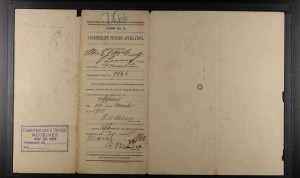
Jane passed away on February 25, 1904 in Alvin, Texas. Her son James Milton lived there, and although she was not listed on the most recent census in the household, perhaps she was visiting him at the time.
She had left five of her children behind, buried in different states. I’m sure she thought of them often.
Her touching epitaph reads, “Mother, our best friend on earth.”
Ironically, James Milton is buried in the Confederate Cemetery in Alvin, where I took some photos in May. I did not seem to get a shot of his marker though, so I guess I’ll have to go back for another visit.
Always looking for an excuse to find more stories.
Robert Henry McGinty (1824-1896) age 72
Elizabeth Jane Lucas McGinty (1828-1904) age 76
Their Children:
John Henry McGinty (1846-1853) age 7
James Milton McGinty (1849-1926) age 77
Mary Jane McGinty Slaughter (1851-1869) age 18
Susan E. McGinty (1854-1859) age 5
Obediah Lamar McGinty (1857-1886) age 29
Robert McGinty (1859- ?)
Nancy Aresenith McGinty Harris (1861-1940) age 79
Sarah Micou McGinty Crouch (1863-1955) age 92
Calhoun McGinty (1866-1875) age 9
Georgia McGinty Murphy (1870-1954) age 84

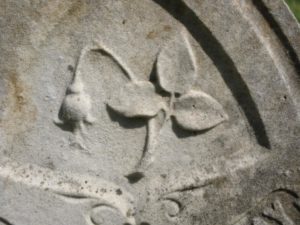
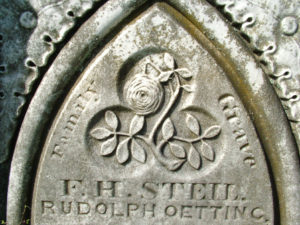 A garland of roses, which may be held by an angel, indicates sorrow, and a bouquet of roses stands for condolences, sorrow or grief.
A garland of roses, which may be held by an angel, indicates sorrow, and a bouquet of roses stands for condolences, sorrow or grief.

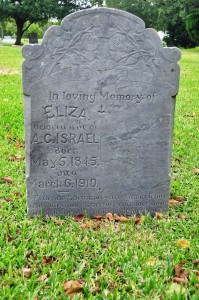

 r tearing the same, and the machine is adapted for washing the finest fabrics – lace curtains and the like. The water is kept constantly boiling by the heater and s continuously circulated throughout he revolving drum an brought into contact with the clothes contained therein. The clothes are constantly carried upward and dripped by means of the radially-disposed ribs and are at the same time subjected to the scoring or rubbing action of the rotary washboard.”
r tearing the same, and the machine is adapted for washing the finest fabrics – lace curtains and the like. The water is kept constantly boiling by the heater and s continuously circulated throughout he revolving drum an brought into contact with the clothes contained therein. The clothes are constantly carried upward and dripped by means of the radially-disposed ribs and are at the same time subjected to the scoring or rubbing action of the rotary washboard.”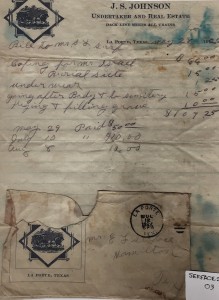 This story has now come full circle, and I got to meet Jan and Eddie in person this week! Eddie even brought me a copy of the undertaker’s bill for Alexander’s funeral. Though the spelling is a bit amusing, once you realize that the funeral cost was quite high for the time it becomes clear that the family probably couldn’t also afford to have his side of the gravestone engraved at the same time.
This story has now come full circle, and I got to meet Jan and Eddie in person this week! Eddie even brought me a copy of the undertaker’s bill for Alexander’s funeral. Though the spelling is a bit amusing, once you realize that the funeral cost was quite high for the time it becomes clear that the family probably couldn’t also afford to have his side of the gravestone engraved at the same time.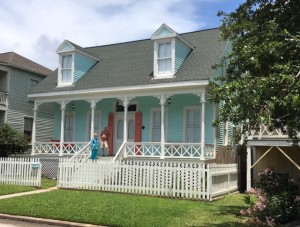
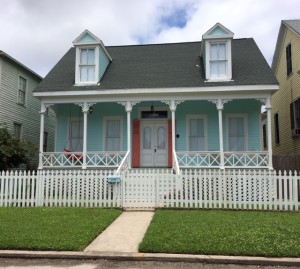
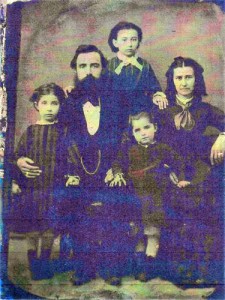

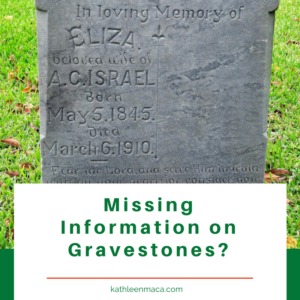

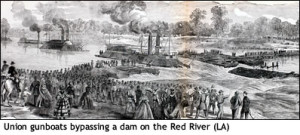 From there, Johann took part in the Red River campaign and was engaged with loss at Sabine Cross Road on April 4, 1864. He re-enlisted during the winter and left on July 21 for furlough in Massachusetts, returning to Donaldsonville in November.
From there, Johann took part in the Red River campaign and was engaged with loss at Sabine Cross Road on April 4, 1864. He re-enlisted during the winter and left on July 21 for furlough in Massachusetts, returning to Donaldsonville in November. While in New Orleans he met NOLA native Married Elenora Johanna Phillippi (1842-1906). They married on September 10, 1866 at St. Matthew’s Evangelical Church in Carrollton, Louisiana.
While in New Orleans he met NOLA native Married Elenora Johanna Phillippi (1842-1906). They married on September 10, 1866 at St. Matthew’s Evangelical Church in Carrollton, Louisiana.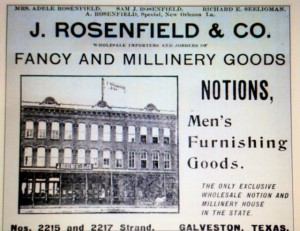
 On September 8, 1900 a hurricane which is still the nation’s worst natural disaster struck the city, smashing buildings and killing thousands of people. John was one of those lost in the tragedy. It was the day after his birthday.
On September 8, 1900 a hurricane which is still the nation’s worst natural disaster struck the city, smashing buildings and killing thousands of people. John was one of those lost in the tragedy. It was the day after his birthday.

 Robert Henry McGinty was born to Shadrach McGinty and Mary “Polly” Lamar McGinty on April 17, 1824 in Jones County, Georgia. Mary’s father James Lamar, according to family stories, was a first cousin to Mirabeau B. Lamar, the second president of the Republic of Texas.
Robert Henry McGinty was born to Shadrach McGinty and Mary “Polly” Lamar McGinty on April 17, 1824 in Jones County, Georgia. Mary’s father James Lamar, according to family stories, was a first cousin to Mirabeau B. Lamar, the second president of the Republic of Texas.



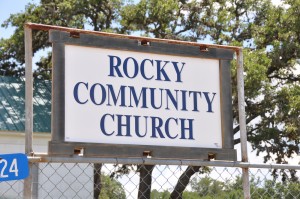 Rocky Community Church Cemetery, sometimes referred to as Rocky Creek Cemetery, in Johnson City, Blanco County, Texas. Unmarked graves make me incredibly sad, but those with only names are sad as well. When did this person live? Where is the family? Not even her first name was included.
Rocky Community Church Cemetery, sometimes referred to as Rocky Creek Cemetery, in Johnson City, Blanco County, Texas. Unmarked graves make me incredibly sad, but those with only names are sad as well. When did this person live? Where is the family? Not even her first name was included.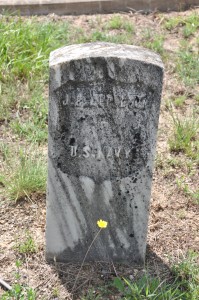 Sarah Jane Null was born On December 23, 1839 in Louisville, Kentucky. In 1859 she married James B. Appleton. James, whose middle initial is sometime listed as “R,” was born in Pennsylvania in 1830.
Sarah Jane Null was born On December 23, 1839 in Louisville, Kentucky. In 1859 she married James B. Appleton. James, whose middle initial is sometime listed as “R,” was born in Pennsylvania in 1830.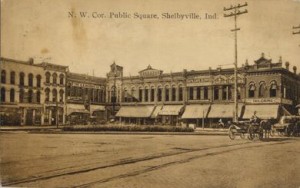
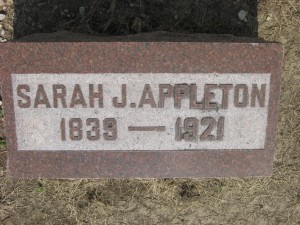
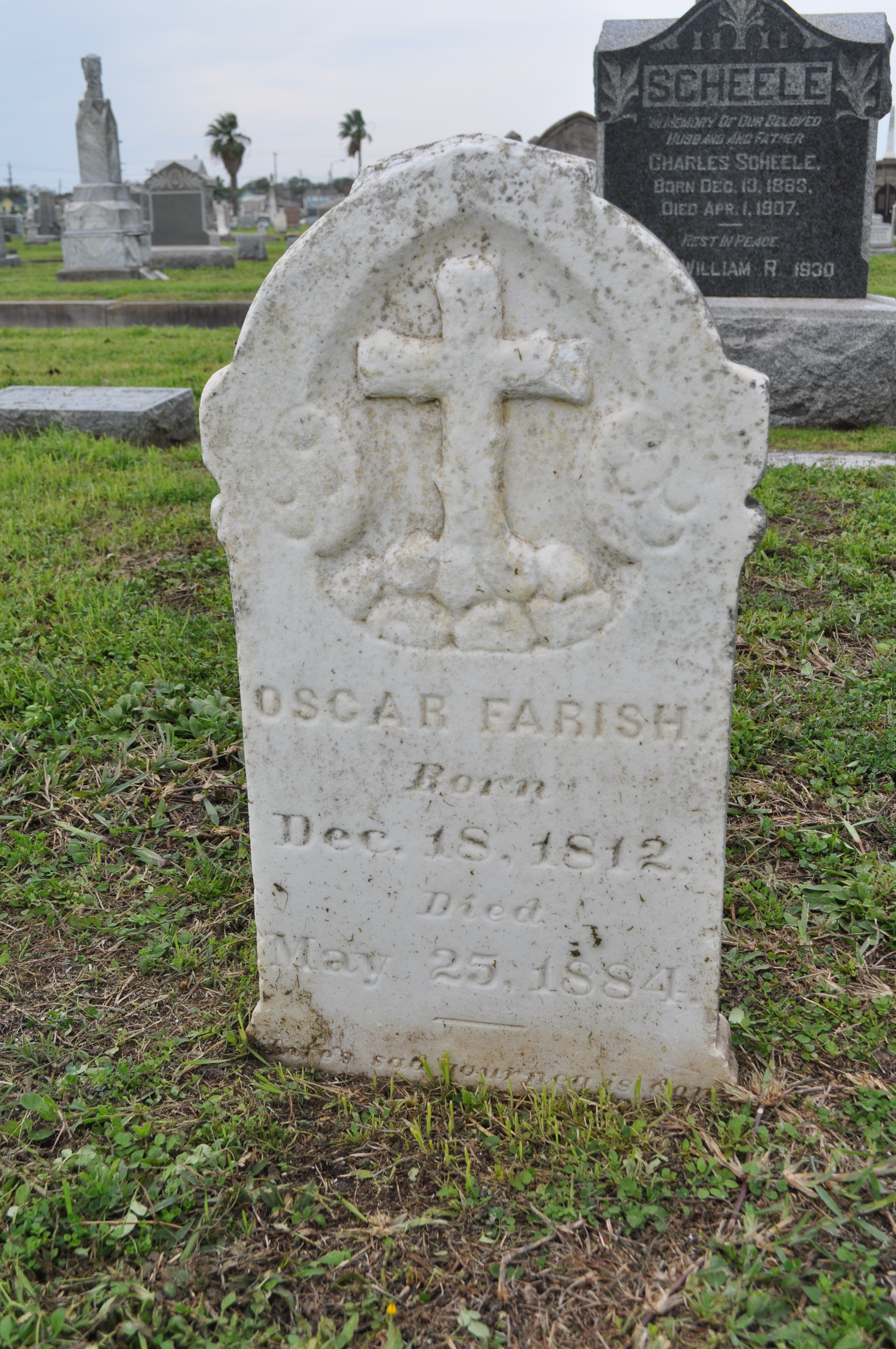

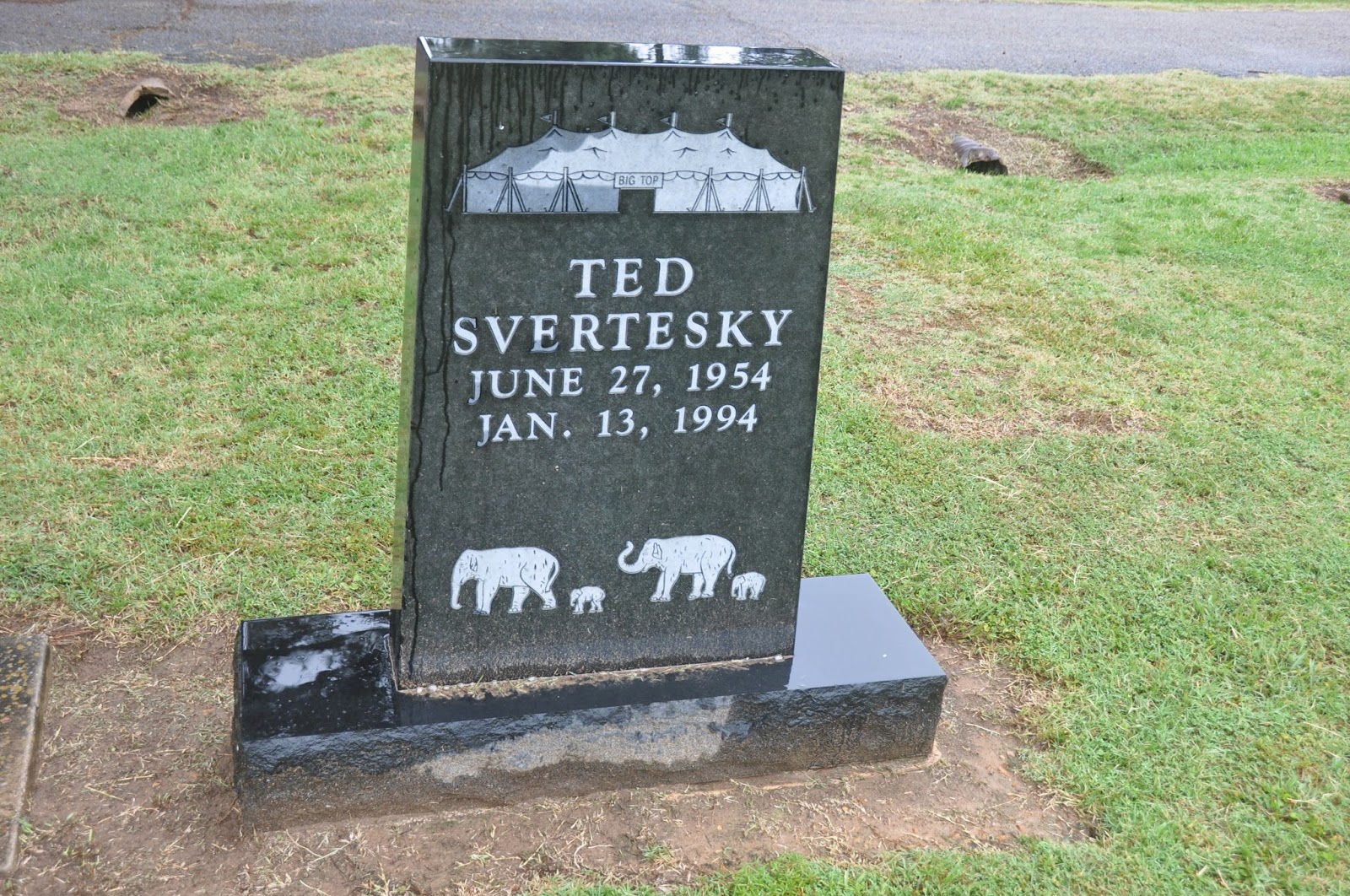 Just after 9:00 in the morning on January 14, 1994, a 53-car Ringling Bros. and Barnum & Bailey circus train headed northbound from St. Petersburg to Orlando for their next show. Rolling along at 38 mph, many of the 150 performers inside were still asleep or just waking up after the previous night’s show when a wheel on one of the passenger cars broke, sending 13 passenger coaches and three flat cars off the tracks. Five of the cars were thrown on their sides.
Just after 9:00 in the morning on January 14, 1994, a 53-car Ringling Bros. and Barnum & Bailey circus train headed northbound from St. Petersburg to Orlando for their next show. Rolling along at 38 mph, many of the 150 performers inside were still asleep or just waking up after the previous night’s show when a wheel on one of the passenger cars broke, sending 13 passenger coaches and three flat cars off the tracks. Five of the cars were thrown on their sides.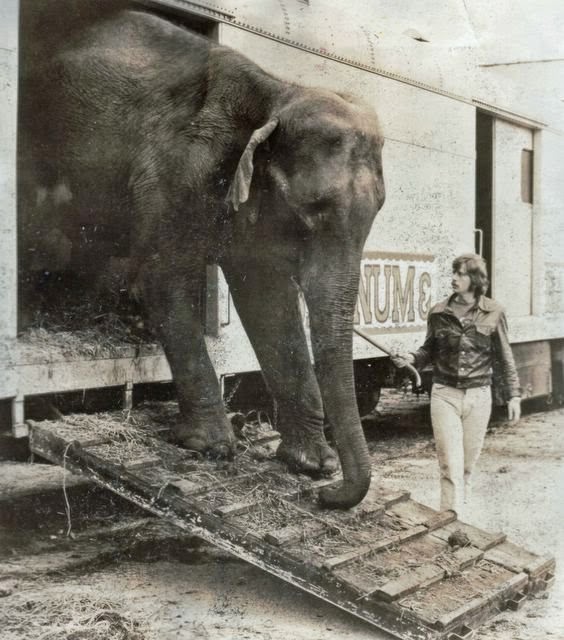

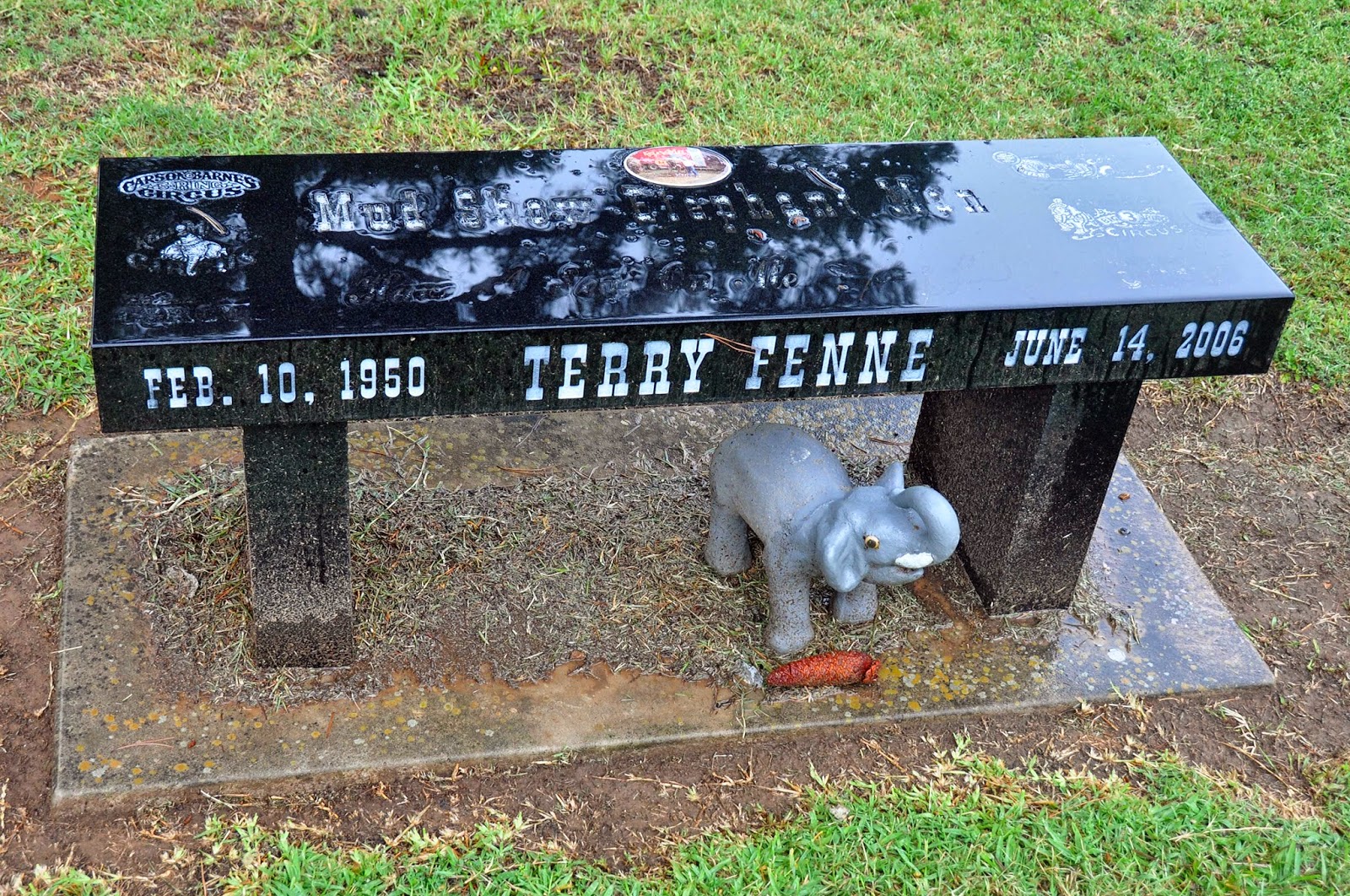
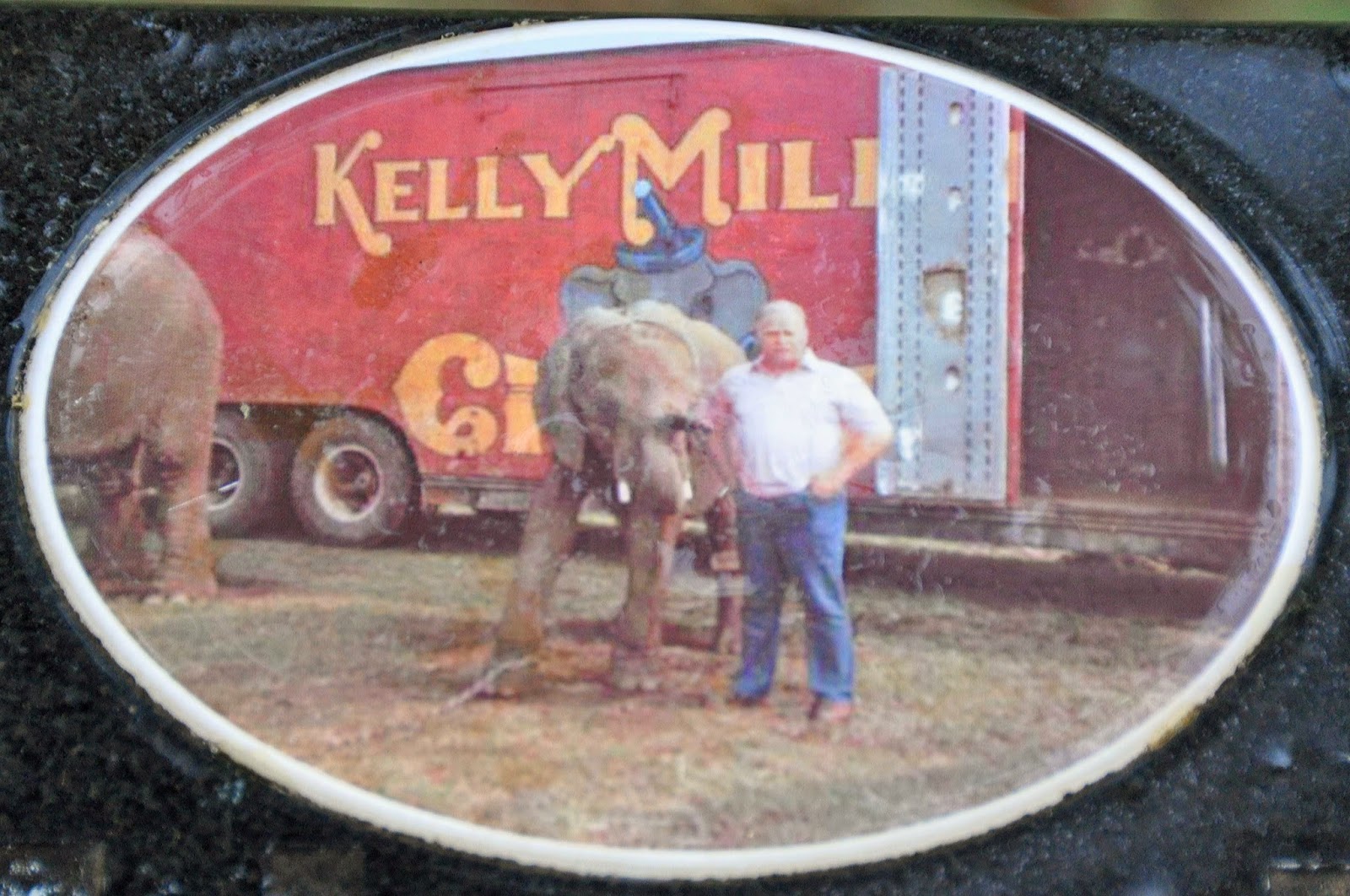


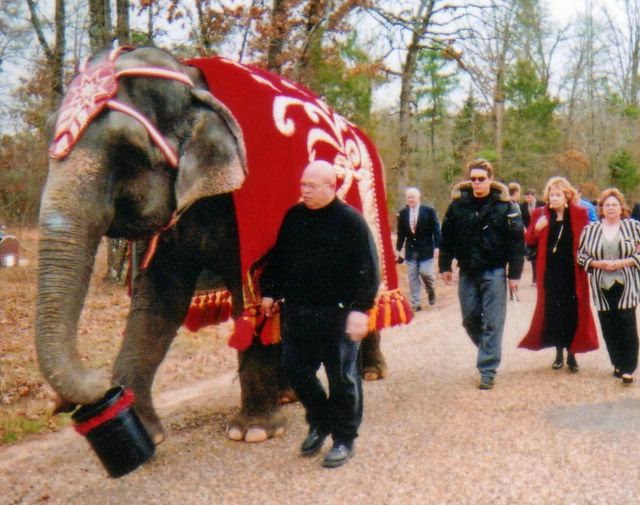
 Hamilton grew up in west Texas, the youngest of eight children. He served in the U. S. Air Froce and worked for the Texas Highway Patrol.
Hamilton grew up in west Texas, the youngest of eight children. He served in the U. S. Air Froce and worked for the Texas Highway Patrol.

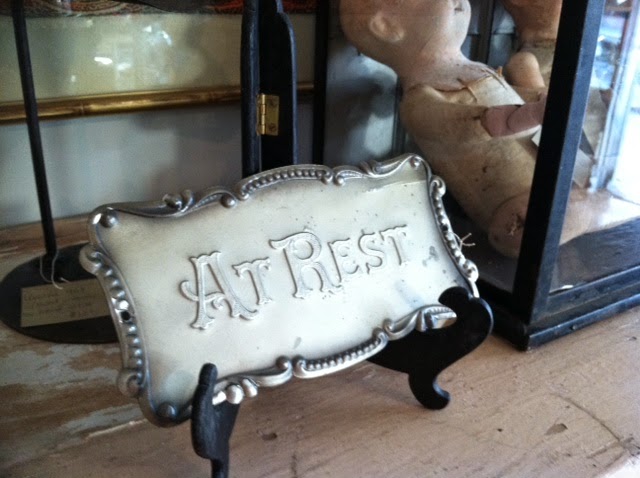 I was glad I had the answer to share with her. Yes, there is a difference although we tend to use the two terms interchangeably.
I was glad I had the answer to share with her. Yes, there is a difference although we tend to use the two terms interchangeably. Wooden coffins, which came into use around the early part of the 16th century in the western world, typically have six sides, and the lid lifts off completely. Once the deceased was placed inside, the lid was nailed shut. Think about the classic Halloween decoration or old black-and-white vampire movies, and you have the idea.
Wooden coffins, which came into use around the early part of the 16th century in the western world, typically have six sides, and the lid lifts off completely. Once the deceased was placed inside, the lid was nailed shut. Think about the classic Halloween decoration or old black-and-white vampire movies, and you have the idea.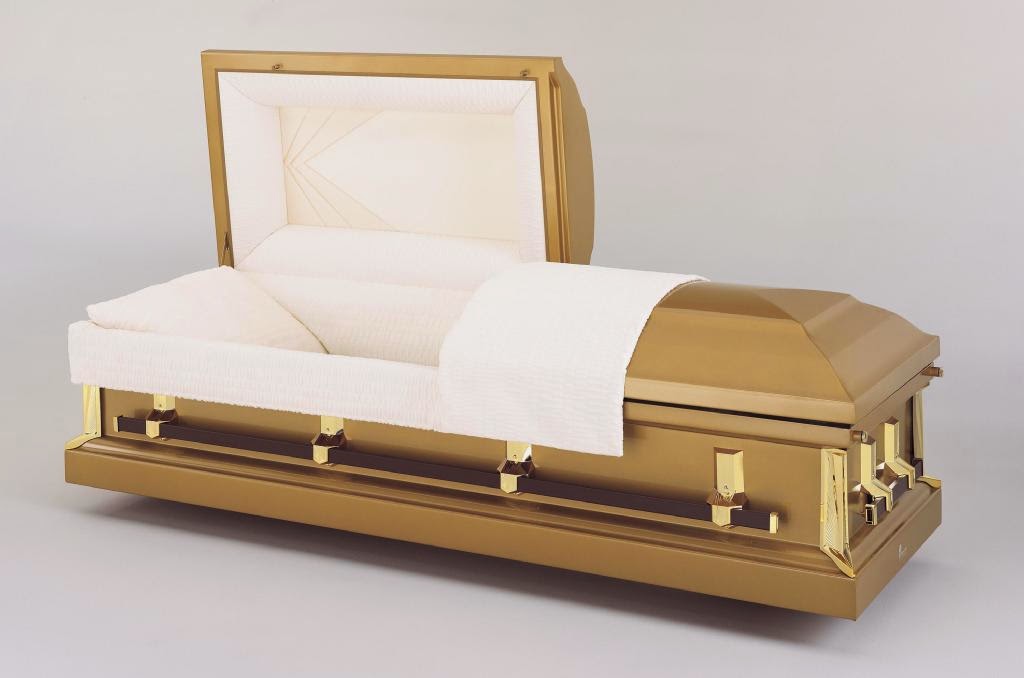
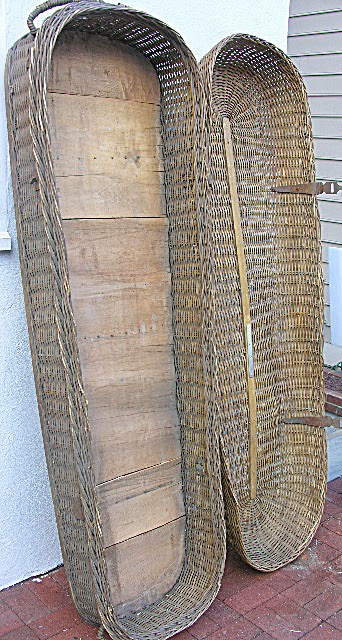 The Greek word “kophinos,” meaning basket, refers to the fact that wicker baskets were used in days gone by. There is a new interest in utilizing them for “green burials.”
The Greek word “kophinos,” meaning basket, refers to the fact that wicker baskets were used in days gone by. There is a new interest in utilizing them for “green burials.”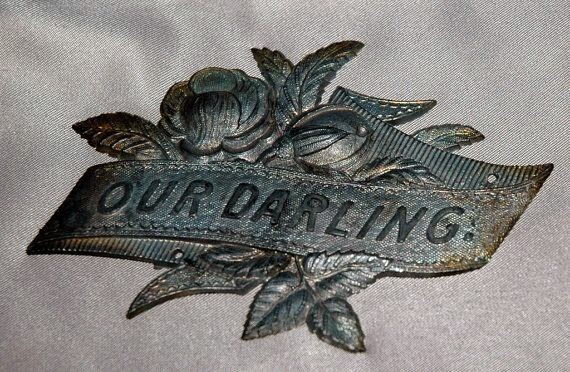 “Fittings” or “coffin furniture” were/are external details such as crucifixes, handles and name plates. The local mortician would often offer “rental” of such adornments which would then be removed immediately before burial.
“Fittings” or “coffin furniture” were/are external details such as crucifixes, handles and name plates. The local mortician would often offer “rental” of such adornments which would then be removed immediately before burial. used to transport a deceased person it is called a “pall,” hence the term “pallbearer” for those that carry it. The word can also refer to a cloth used to drape over the coffin.
used to transport a deceased person it is called a “pall,” hence the term “pallbearer” for those that carry it. The word can also refer to a cloth used to drape over the coffin.